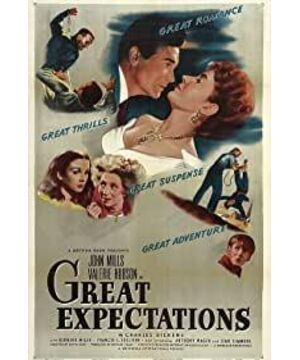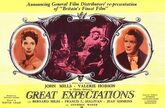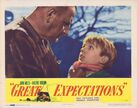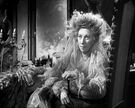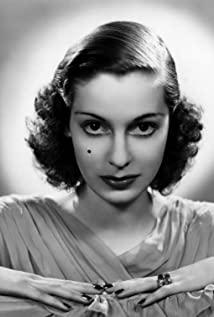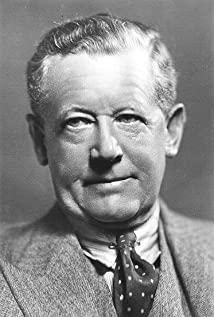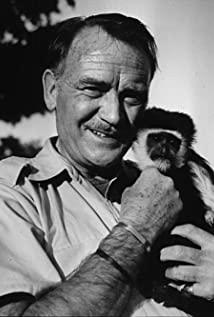Tears of the Lone Star is based on Dickens' novel Splendid Expectations. This novel is Dickens's later works, and its social critical significance is more profound than his earlier works. The title of the novel is "Splendid Future", which is actually a description of the disillusionment of the protagonist, Pip, who wants to be a high-ranking person. The title of the book is a kind of irony.
Literary works and films are qualitatively different in terms of expression, so few successful adaptations are made. This film is the most successful film of Dickens's works on the screen, and has been praised by film critics for many years. The film first faithfully reproduces the theme and character of the original book. Dickens's works have always praised the simplicity and sincerity of the working people, and lashed out at the selfishness and ruthlessness of the rich. The novel also expresses the thoughts of gratitude and ingratitude when it shows this theme. The nobility of the blacksmith Joe and his wife Betty in the film contrasts sharply with the meanness of the rich Miss Havison. Pip was often abused by his sister as a child, but Joe was very caring, loving, and considerate of him. The film adopts the editing method of sound and picture when showing Pip being whipped, and combines the whipping sound with Joe's reaction shots, thus showing Joe's touching concern for Pip. Joe is both happy and reluctant when Pip leaves Joe for London. He knows very well that there is an insurmountable gulf between himself and the "superior", and that Pip becomes the superlative, and he will lose Pip; but he is still happy for Pip's future. Betty teaches little Pip to read, but doesn't agree that his purpose in reading is to become a good man so that Estella can be treated as an equal. Qiao and Betien are happy and have their own dignity. After Pip's dream broke, he fell seriously ill and repaid his debts. They took him back to his hometown to take good care of him, gave him warmth, and repaid his debts. On the contrary, Miss Havisson did not hesitate to manipulate Estella to take revenge on the man for the old hatred of Nuxue being abandoned by the groom. She grew up to be a cruel person, and when she grew up, she married the rich villain Jumer; On the other hand, he keeps instigating Estella to tease Pip, make Pip love her, and break them up in the end, and both of them become her victims. From this contrast, the film faithfully reproduces Dickens' original spirit and character. The film's condemnation of ingratitude is also profound. After Pip has lived a life of high class people in London, Joe comes to see him. Pip thinks Joe is rustic and does not match his identity, but he can't help but treat him politely. Joe saw this and met very cautiously. Again he carefully placed the top hat on the mantelpiece, it was narrow, and the hat fell off; he wiped the hat with his sleeve and put it back in place, and unfortunately it fell again, and Joe chased it, holding the hat, until It fell flat in the basin on the table. This comic detail is not meant to ridicule Joe, but rather expresses Joe's reaction when he is acutely aware that Pip's sense of being a good man has prevented him from treating himself as an equal. When Joe parted, he called Pip Mr., and then couldn't help calling him an old friend, saying, "You don't want me to be disgusting if you think of me as Joe's blacksmith." The director Lean borrowed Joe's words to criticize Pip, who was infected with "snobbishness". The original uses Pip to recall the past as an adult The first-person approach of the book, with a lot of mental activity to express, Lean found a neat equivalent in the adaptation—the voiceover of adult Pip. Pip learns that Joe is coming to see him, for fear of embarrassing him, and his mental activity uses sound and picture counterpoint, which is expressed by Pip's inner monologue: "If I can send him away with some money, I would rather give it to him. His money." The following inner monologue (voice-over) blamed himself: "I wanted to be a high-ranking person, but I ended up being a snob." This is the self-blame of adult Pip when he recalls the past, and it is wonderful to show himself. , and contributes to the shaping of Pip's image, which shows that after all, Pip came from a humble background and did not lose his kindness. Pip went back to his hometown at Havisson's request. On the way, Joe's simple self-esteem condemned him deeply. He planned to sleep in the smithy and catch up with Joe, but the further the stagecoach went, the more hesitant he became. The sound and the image are detached. The picture shows him sitting in the car, but many voices are heard. Joe, Betty, Estella, and Haverson are all talking about him. He was ashamed to live in a blacksmith's shop, and his inner monologue (voice-over) criticized himself: "There is no liar in the world more than a person who deceives himself." He stayed in the Blue Wild Boar Hotel.
Gratitude is the opposite of ingratitude. A fugitive who vows to raise the boy to be a good man just because Pip helps him with meatloaf and wine when he is desperately hungry shows the scorned prisoner's desire for love and kindness. The film's sympathy for the McGarvey district reproduces the humanitarian spirit of the novel. And McGraw's gratitude to Pip contrasts with Pip's ingratitude to Joe. Pip's money, along with Estella, comes from the lower class he despises, not the upper class he seeks, and his snobbery is all the more deeply ironic. Regrettably, Lean did not explain the relationship between McGraw and Scarface. In the original book, Scarface was the main culprit who abetted the crime in McGraw (also the groom who abandoned Havisson), and because he had money, he got away with it later. Dickens criticized the social ugliness of the Victorian era and revealed that the poor and the rich were not equal before the law. But Lean cut out this part of the plot, lest it be overwhelmed, so that it was reduced to a conflict between two fugitives with personal vendettas, thus weakening the film's critical power.
Dickens's novels have the characteristics of film, especially good at observing things from a child's perspective and subjective feelings. Lean makes good use of these descriptions, creating Dickensian exaggerated images that allow the audience to "share Pip's own exaggerated experience" (Lean's words). For example, at the beginning of the film, Pip meets a fugitive in a cemetery. From Pip's point of view, the camera captures an ancient tree that looks like a grotesque figure. The tree branches are like bony hands reaching for Pip. The wind is howling, and Pip jumps up and runs in fear. The camera follows him and hits the fugitive. Here the camera and the sound give us the same feeling as Pip, who runs away in fright, and we run after him; he hits the fugitive, and we seem to follow him. The novel has a long description of the fugitives intimidating Pip, saying that if Pip does not obey, he will take out Pip's heart and roast it. There is another young man who is more powerful than him. Even if the door is locked and the quilt covers his head, he can sneak in and tear him apart. Scared Pip to think about it all night and dare not sleep. In the movie, Lean used the fugitive intimidation voice-over to cooperate with Pip's actions of going to bed and being covered to express his sense of panic that he wanted to escape and had nowhere to escape. In the scene where he went downstairs to steal the meatloaf, every sound of the stairs seemed to wake Mrs. Jo, and Pip shivered. In the scene where Pip crosses the depression to deliver food to the fugitive, every cow seems to be scolding him for stealing and trying to catch him. The film uses sound to make the audience experience the feeling of little Pip being a "thief" with a guilty conscience. These scenes, Dickens's descriptions are originally very cinematic, and the psychological descriptions of the children are also very exciting, but it is Lean's creation that the audience can feel the children's thoughts in such a concise way. The first impression the film gives the audience to the Satis House and Miss Havison is also done from the point of view of little Pip. After little Pip was sent to his destination, the hands of the clock stopped at 8:40 from Pip's eyes, and thus the audience. Pip stopped in front of Miss Havisson's door and opened it belatedly. The scene from his perspective, except for the temperature and mildew that cannot be represented in the film, completely reproduces the scene described in the novel. In Miss Havisson's darkened room, the candles glowed dimly, cobwebs and dust loomed everywhere, Bibles, white gloves, and jewels lay on the dresser; Recognizable wedding cake. The white wedding dress had turned grey. She described it as haggard, hoarse and intimidating. The film's grotesque Miss Havisson and her surroundings blend fantasy with reality better than fiction. In addition, there are two other places where Pip's perspective is used to make the audience agree with his feelings: one is the beginning of Pip's sister's banquet, and little Pip is sitting on pins and needles for fear of stealing meat. The pie thing was discovered. When his sister was about to get the meat pie, he got up and opened the door to escape, hitting the soldier standing outside the door. The audience was unprepared at this point, and was as surprised as little Pip. The other is that, on a stormy night, when the McGarvey District came to visit, Pip responded and opened the door. The camera looked at the McGarvey District from Pip's point of view, and suddenly saw the tall and ominous black figure, wrapped in a scarf, with a The black eye patch made us startled.
The film deletes some minor characters and plot clues in the novel, which makes it appear compact. The transition to some cutscenes is also very smooth. For example, from the time Pip begins to learn from Joe to Jagger's visit, the film skips a large section of the novel's narrative. When Pip tells Havisson that he is going to be an apprentice with Joe, he can't play again and jumps directly to Jagger to the blacksmith. In the scene, the actor has also changed from little Wedge to adult John Mills. The transitions in between are connected by sound. We hear him answering Jagger's questions, and we see the big Pip's shadow on the wall before we see Mills, a shift that keeps Pip's changes from being too abrupt. In this shot Pip is still wearing a blacksmith's girdle, the next shot immediately cuts to his feet, and the camera pans up to see him in his new clothes standing in front of the Satis mansion. Pip's process of learning to be a high-class man is also condensed into a set of pictures to learn dance, boxing and swordsmanship. He was instructed on meal etiquette while Herbert told him about Havison's past. Such compression and abridgement can not only refine the film, but also free up capacity to play other necessary details, making the film appear richer and without branches.
The description of the background in the novel is very distinctive, especially the description of the cold, lonely swampy area of East Kent, England; but the description of the silt in the original work is impossible to transfer into the film. Lean made his own unique, expressive treatment. In the opening scene of the film, at sunset at the Thames Estuary, a distant view of a lonely little boy - Pip - running along the river bank, over a winding path with a gallows, and he runs to the cemetery . The scene was shot on location in the swamp. The light and shadow, the uninhabited swamps, the gallows, the cemetery, and the whistling wind made the atmosphere of the scene very mournful. Some of the backgrounds in the original novel have symbolic meanings, the background of the dilapidated Satis mansion and those stopped clocks, not only symbolize the pause of Havisson's world, the gradual destruction of Estella, but also herald Pip's promotion to high society. The disillusionment of the dream. On the wall of the lawyer Jager's office, the mask removed from the face of the criminal is a symbol of Jager's life. These backgrounds are also accurately reflected in the film.
View more about Great Expectations reviews


